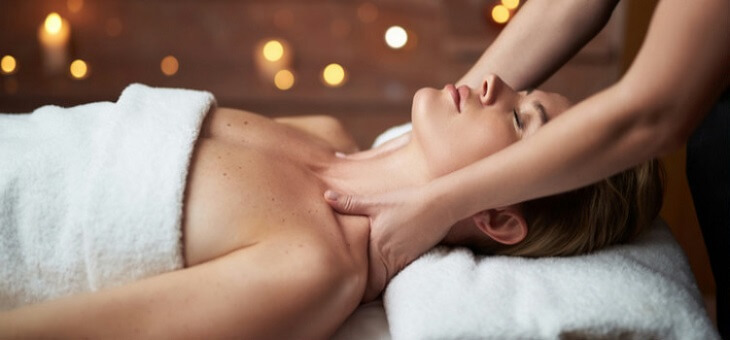Lymphatic massage has been popularised in recent years but has been used for medical purposes for close to a hundred.
Manual lymphatic drainage was pioneered in the 1930s when used in the treatment of immune disorders and chronic sinusitis. Today, lymphatic massage has become a wellness treatment and is known for its wide range of potential benefits. These include supporting immune system function and even increasing muscle tone.
The lymphatic system is a network of organs and tissues that help to remove waste and toxins from your body. It includes the adenoids, tonsils, thymus and spleen. Lymph, a fluid containing white blood cells that help to fight infection, is transported around the body by the lymphatic system. This lymph is filtered at the lymph nodes, which connect lymphatic vessels.
There are hundreds of lymph nodes in the body, located between the head and knees. Some are located deep in the body, around the heart and lungs, while others are close to the surface, such as those in the groin, armpits and under the jaw line.
You may be able to feel these lymph nodes when they’re inflamed and fighting infection.
Read: Saving your eyesight early
“Unlike the circulatory system, the lymphatic system does not have a pump, which means it’s heavily dependent on movement,” health coach Ivonne Boujaoude explained to Mind Body Green (MBG). Lymphatic drainage helps the body’s natural detox process by preventing the system from becoming sluggish.
Dr Boujaoude says: “This unique massage technique stimulates lymph flow and enhances the clearance of accumulated toxic waste in the body.”
Massage and drainage can help to improve circulation and reduce swelling throughout the lymphatic system by aiding the movement of lymph.
Doctor of physical therapy Heather Jeffcoat told MBG: “These specialised hand movements follow the anatomy and physiology of the lymphatic system and should not be confused with a basic massage.”
Lymphatic drainage is most commonly used in the treatment of lymphoedema, a condition that causes swelling, usually in the arms and legs. The use of lymphatic massage alongside compression in lymphoedema patients has been found to decrease swelling.
Some research also supports lymphatic massage in the treatment of orthopaedic injuries, insomnia and fibromyalgia. Anecdotally, lymphatic massage is also known to aid the body’s detox process, reduce bloating, can help to support the immune system, relax the nervous system, and improve digestion and the appearance of the skin.
Read: What happens when you stop sex
How to give a lymphatic massage at home:
To perform a lymphatic massage, you’ll need to be calm, relaxed and in a comfortable position. If you’re stressed, rushed or distracted, it’s best to wait until a more appropriate time. A lymphatic massage is not like other muscular massages, so you need only apply light or gentle pressure.
Get into position
Place a towel or yoga mat on the floor. Sit on it cross legged with your back straight.
Massage the neck
There are collection ducts located in the hollow just above your collarbone. Lightly apply pressure and slowly pull the skin downward. Repeat this in both the right and left hollows.
Massage the armpits
The auxiliary nodes are located in your underarms. To massage them, place your hand under the opposite underarm directly on the skin. Gently apply pressure and slowly pulse your fingers up into your armpit. Then switch arms and repeat.
Massage the stomach
Place your hands lightly on your abdomen. Inhale to gently push your abdomen into your hands, then exhale to gently push your navel toward the floor.
Massage your legs
Place your hands at the crease of your thigh and use gentle wavelike motions to apply pressure to the thighs.
Some experts believe that lymphatic massage should not be performed at home, but left to the professionals, while others, including Dr Boujaoude, encourage a DIY approach.
Read: How to give yourself a massage at home
Have you heard of lymphatic massage? Do you think you may benefit you?
If you enjoy our content, don’t keep it to yourself. Share our free eNews with your friends and encourage them to sign up.
Disclaimer: This article contains general information about health issues and is not advice. For health advice, consult your medical practitioner.

